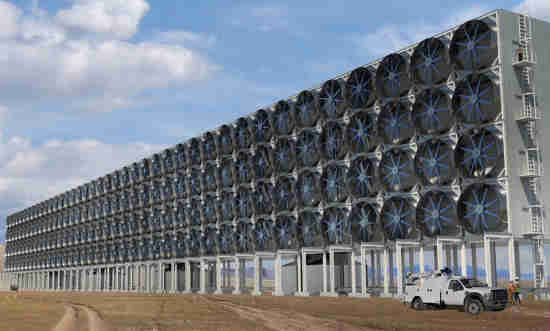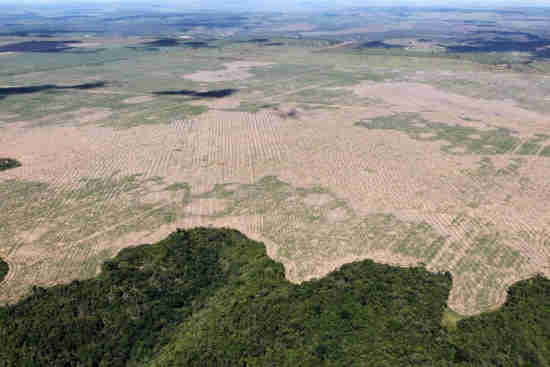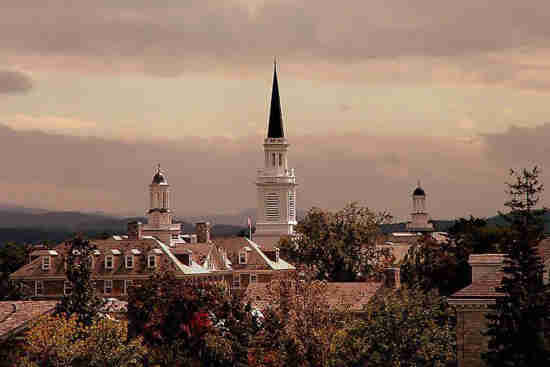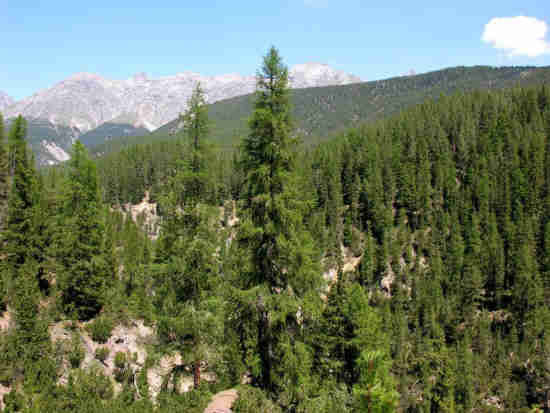3 mins read//
In my reporting on Carbon Engineering, the innovative Canadian firm leading the market in the Direct Air Capture (DAC) of atmospheric carbon dioxide, I have talked about human civilization’s desperate need to find an effective solution for sequestering atmospheric carbon dioxide.
In my mind, pulling carbon dioxide out of the air - as Carbon Engineering is planning to do at scale in the Permian Basin of Texas - is equivalent to bailing water from the bottom of a leaky boat.
Ultimately, the only real solution is to get a better boat; short-term, we need to make sure the boat we’re in stays afloat long enough for the better boat to get built.

Artist's conception of a Carbon Engineering Direct Air Capture (DAC) installation CARBONENGINEERING.COM
Carbon Engineering’s installations represent an excellent, high-tech mechanism to draw carbon dioxide, a powerful greenhouse gas, out of the atmosphere. However, there also exists a low-tech mechanism to sequester atmospheric carbon dioxide. This solution is so low-tech that it has existed for roughly 385 million years: Trees.
According to recent research from Thomas Crowther at ETH Zurich, roughly 3 trillion trees grow on the earth at present and in total, they sequester on the order of 400 Gigatons of carbon dioxide. Crowther and his team figure that enough land exists to be able to plant an addition 1.2 trillion more trees without affecting agricultural production. Were this many trees to be planted, we would succeed in sequestering the better part of the last decade’s worth of carbon emissions.
Even if, for some reason, the planting of 1.2 trillion trees is considered too radical, at the very least, we should be making a concerted effort to keep as many of the 3 trillion presently planted trees standing (The world is watching, Jair!).

Deforestation in the Maranhão state of Brazil, 2016 WIKIPEDIA.ORG
It turns out that there is an economic incentive for landowners to preserve forested acreage that stands to become even more powerful the more serious world governments get regarding carbon pricing – the market for carbon credits.
Carbon credit markets allow landowners to receive credit for leaving forests intact rather than putting up a parking lot. After landowners receive the credits, they can turn around and sell them to businesses that must meet a regulatory mandate to offset their carbon emissions or which have voluntarily committed to carbon footprint reductions.
(You can find a good calculator to estimate the carbon footprint of various activities – flying, driving, maintaining a single family home – on The Nature Conservancy’s website.)
If you’re like me, your only exposure to carbon markets to date has been a checkbox asking if you want to buy a carbon offset to go along with renting a car or booking a flight. Like me, you may have been suspicious about what’s behind this checkbox. I, in fact, habitually check that carbon offset box in the same way that I send money to Doctors Without Borders – not precisely sure where the money is going, but with the vague hope that it will end up doing some good.
Imagine my surprise as I began learning about this topic that the market for carbon credits and offsets is not just a charity giveaway, but in fact has real economic impacts.
My old alma mater, Middlebury College, achieved carbon neutrality in the middle of the last decade (2016) partly thanks to a flourishing carbon credit market that allowed the college to offset emissions that could not physically be halted through efficiency gains or switching to lower-emission power sources.

The spire of Mead Memorial Chapel, completed in 1916, rises on the highest elevation of the Middlebury College campus WIKIPEDIA.ORG
In addition, Middlebury’s trustees are able to generate income for the school from selling carbon credits generated by the conservation of the forests on and surrounding its famous Bread Loaf campus (home to the Robert Frost Farm).
I am still learning about the carbon credit markets and have found several very interesting firms that are key players in them. In my next two articles, we will delve further into the carbon credit market and dive in to learn more about a few incredible firms.
Source: https://www.forbes.com/sites/erikkobayashisolomon/2020/01/23/the-premier-technology-for-sequestering-carbon/?sh=79a7152970b5











